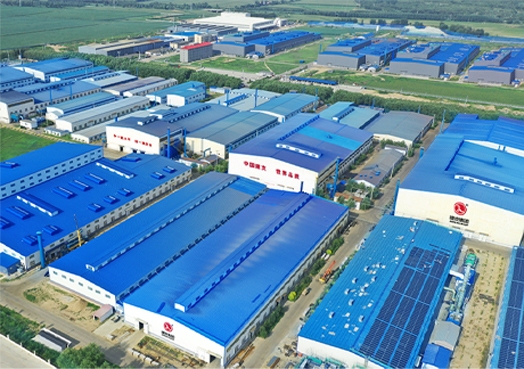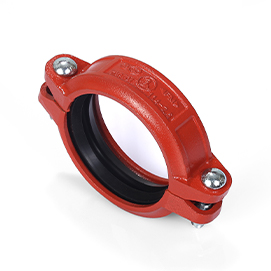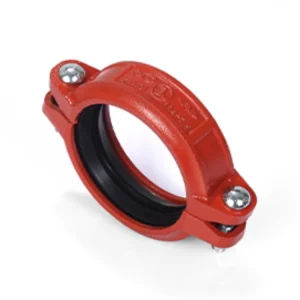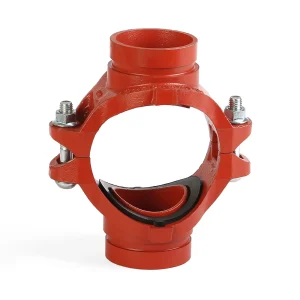Picking the right pipe fittings is important for a piping setup’s efficiency, safety, and long life. Whether you work on industrial pipelines, plumbing, or heating and cooling setups, you need to know key points like material fit, pipe size, pressure and heat limits, and connection ways. This guide fully explores these points and explains why Vicast is a reliable choice for high-quality pipe fittings.
Why Is Material Compatibility Important in Pipe Fittings?
Material fit is a big part of choosing pipe fittings. If materials don’t match, problems like rust or leaks can happen. These issues can break the setup. So, picking fittings that work well with the pipe and the liquid or gas inside ensures strength. It also prevents costly repairs.
Common Materials Used in Pipe Fittings
Pipe fittings come in different substances, each good for certain jobs. Stainless steel fights rust well. It suits chemical processing or water treatment. Carbon steel is strong and cheap. It’s great for high-pressure jobs like oil and gas lines. PVC and CPVC are light and rust-proof. They’re often used in plumbing and watering systems. Brass is easy to shape and resists rust. It’s perfect for home plumbing. Alloy steel mixes metals for extra strength. It’s ideal for tough places like refineries. Ductile iron, coated with epoxy, is strong and rust-resistant. It’s good for water supply networks.
How Material Selection Affects Durability and Performance
The substance of a pipe fitting affects how long it lasts and how well it works. Stainless steel resists rust and lasts in harsh places like chemical plants. Carbon steel handles high pressure nicely. It fits oil and gas setups. PVC is light and rust-proof, great for plumbing. Brass looks good and is easy to work with, ideal for home use. Ductile iron withstands pressure and rust. It’s perfect for city water setups. Choosing the wrong substance can cause trouble. For example, mixing different metals may lead to rust. High heat can also weaken some materials. So, always match the fitting’s substance to the pipe and setup conditions. This keeps things reliable for a long time.
| Material | Strengths | Common Uses |
| Stainless Steel | Rust-resistant, long-lasting | Chemical plants, marine settings |
| Carbon Steel | Strong, affordable | Oil and gas, industrial lines |
| PVC/CPVC | Light, rust-proof | Plumbing, irrigation |
| Brass | Attractive, workable | Home plumbing |
| Ductile Iron | Sturdy, pressure-resistant | City water supply |
How Does Pipe Size and Type Influence Fitting Selection?
Pipe size and kind strongly affect fitting choices. They change how well liquid flows and how strong the setup is.
The Role of Pipe Dimensions in Choosing Fittings
Fittings must fit the pipe’s inner width for a smooth connection. Pipe sizes go from 1/4 inch to 48 inches. Fittings are sized to match. Too-small fittings block flow. Too-large ones waste space and materials. So, use a size chart to pick the right fitting based on the pipe’s outer width.
Matching Pipe Types with Appropriate Fittings
Different pipe kinds need specific fittings. PVC pipes use solvent-welded or push-to-connect fittings. These are quick to set up in low-pressure setups. Copper pipes need sweat or flare fittings for tight connections in high-pressure setups. Steel pipes often use threaded or welded fittings for industrial setups. Plastic pipes like PE or HDPE work well with mechanical fittings. For example, Vicast’s grooved pipe fittings are great for water supply networks. Matching fittings to pipe kinds stops pressure loss or leaks. This ensures the setup runs smoothly.
What Role Do Pressure and Temperature Ratings Play in the Selection Process?
Pressure and heat limits are key to ensuring fittings can handle setup demands safely.
Understanding Pressure Ratings for Different Applications
Fittings have maximum pressure limits, measured in PSI, to avoid leaks or bursts. For low-pressure jobs like plumbing, PVC or brass fittings handle up to 200 PSI. For high-pressure jobs like oil and gas, carbon or stainless steel fittings manage up to 6000 PSI. Always pick fittings with pressure limits higher than the setup’s needs. This keeps things safe.
The Impact of Temperature on Pipe Fitting Performance
Heat changes how materials work. PVC and CPVC work up to 140°F. But their pressure limits drop as heat rises. Stainless steel handles very high heat. It’s great for chemical or steam setups. Carbon steel works well in hot places like refineries.
| Material | Max Temperature (°F) | Pressure Drop Factor (110°F) |
| PVC | 140 | 0.51 |
| Stainless Steel | 1000+ | Minimal |
| Carbon Steel | 800 | Minimal |
Choose fittings with heat limits that match your setup’s conditions. This stops materials from weakening or breaking.
How Does the Type of Connection Affect the Choice of Pipe Fittings?
The connection way decides how fittings join pipes. It affects setup, upkeep, and leak prevention.
Threaded vs. Welded Connections: Pros and Cons
Threaded connections are simple to install. They suit low-pressure setups and allow disassembly. But they may leak if not sealed well. Welded connections are strong and leak-proof. They’re great for high-pressure setups. However, they need skilled workers and are permanent.
The Importance of Leak Prevention in Connection Types
Stopping leaks is vital for setup safety and efficiency. Threaded connections need sealants like Teflon tape for a tight seal. Welded connections make a strong, lasting bond. For quick, reliable connections, Vicast’s grooved pipe fitting couplings offer mechanical solutions. These cut setup time and ensure leak-free performance.
Why Should You Consider Vicast as Your Reliable Pipe Fitting Coupling Supplier?
Vicast is a leading maker of high-quality pipe fittings. They focus on grooved fittings for industries like water supply, fire protection, and industrial pipelines. With a focus on quality, new ideas, and customer care, Vicast is a trusted choice for strong, reliable fittings.

Key Features and Benefits Offered by Vicast
Vicast’s products, found on their products page, include a wide range of grooved fittings. These are designed for efficiency and easy setup. Their grooved pipe fitting couplings provide flexible, leak-proof connections. They work well for water supply and fire protection setups. These couplings save time compared to welded fittings. Vicast’s connectors ensure secure, high-pressure connections for plastic and steel pipes. They’re perfect for city water setups. Their mechanical tees allow easy branching without welding. This adds flexibility to industrial setups. Vicast uses ductile iron with epoxy coatings. This ensures strength in tough places like wastewater setups. Their grooved fittings also make upkeep simpler and cheaper.

How Vicast Ensures Quality and Reliability in Its Products
Vicast ensures quality with strict making processes. Their products meet global rules like ASTM and ANSI. This ensures reliability in tough jobs. They do careful checks, pressure tests, and special tests to ensure fittings have no flaws. Through their contact page, Vicast offers expert help. They guide customers to choose the right fittings. Their grooved fittings cut setup time by up to 50% compared to traditional ways. This boosts project efficiency. By choosing Vicast, you get a reliable supplier with a strong history of delivering high-performance fittings that fit your needs.
Conclusion
Choosing the right pipe fittings needs careful thought about material fit, pipe size and kind, pressure and heat limits, and connection ways. These points ensure a safe, efficient, and strong piping setup. As a trusted supplier, Vicast offers high-quality grooved fittings. They meet industry rules and simplify setup. For your next project, consider Vicast’s new solutions to improve setup performance and reliability.
FAQs About Pipe Fittings Selection
What Are the Common Mistakes to Avoid When Selecting Pipe Fittings?
Picking mismatched materials can cause rust. Always match fitting and pipe substances. Ignoring pressure limits risks leaks or breaks. Use fittings with higher pressure ratings than needed. Wrong sizing leads to flow problems or wasted materials. Check a size chart for accuracy.
How Can I Determine the Correct Pressure Rating for My Application?
Find your setup’s maximum operating pressure. Choose fittings with a rating at least 20% higher for safety. Check maker details and rules like ASME or ANSI for help.
Are There Industry Standards That Govern Pipe Fitting Selection?
Yes, rules like ASTM, ANSI, and ASME ensure fittings meet quality and performance needs. For drinking water setups, NSF61 certification ensures safety. Always confirm fittings follow these rules.









